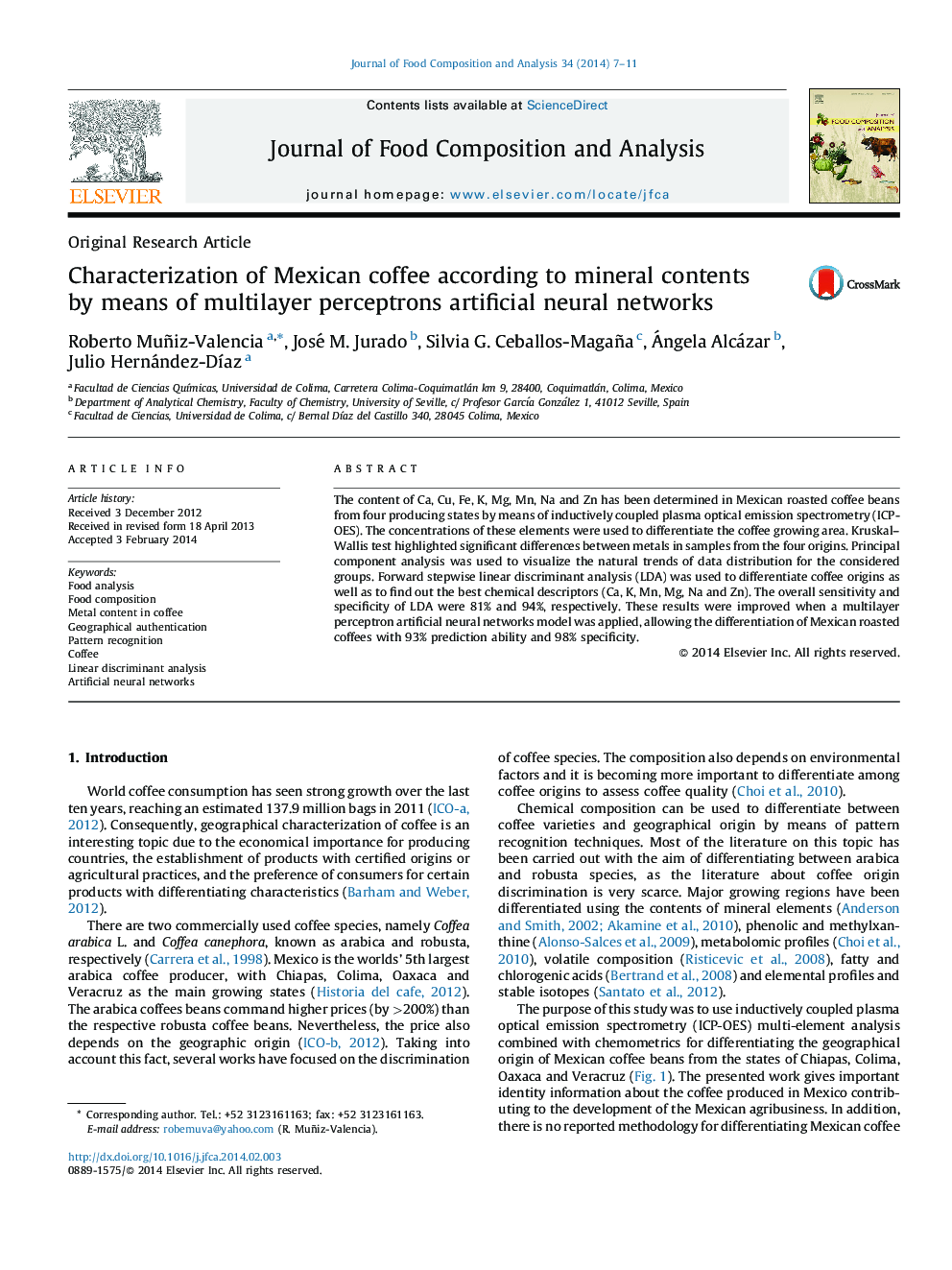| Article ID | Journal | Published Year | Pages | File Type |
|---|---|---|---|---|
| 1218350 | Journal of Food Composition and Analysis | 2014 | 5 Pages |
•Coffee classification determined by chemometric methods using metal content.•A methodology to recognize the coffee production area was constructed.•The model allows classification with 93% prediction ability and 98% specificity.•Authorities could use this methodology to prevent fraud or mislabeling.•Methodology could be used to promote denomination of origin labels.
The content of Ca, Cu, Fe, K, Mg, Mn, Na and Zn has been determined in Mexican roasted coffee beans from four producing states by means of inductively coupled plasma optical emission spectrometry (ICP-OES). The concentrations of these elements were used to differentiate the coffee growing area. Kruskal–Wallis test highlighted significant differences between metals in samples from the four origins. Principal component analysis was used to visualize the natural trends of data distribution for the considered groups. Forward stepwise linear discriminant analysis (LDA) was used to differentiate coffee origins as well as to find out the best chemical descriptors (Ca, K, Mn, Mg, Na and Zn). The overall sensitivity and specificity of LDA were 81% and 94%, respectively. These results were improved when a multilayer perceptron artificial neural networks model was applied, allowing the differentiation of Mexican roasted coffees with 93% prediction ability and 98% specificity.
